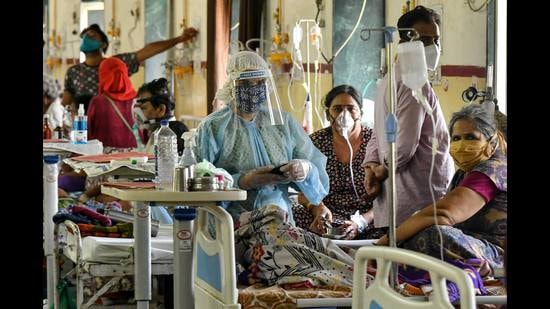The priority sector lending India needs
Redefine what constitutes priority sector, expand scope for health care and education, and reconfigure loans into grants for the vulnerable
The origins of priority sector (PS) lending can be traced back to 1966 when Morarji Desai saw a need for increasing credit to agriculture and small industries. However, the definition for PS was only formalised based on a Reserve Bank of India (RBI) report in the National Credit Council in 1972. After bank nationalisation, the PS formulation also allowed Indira Gandhi to assuage important political lobbies, in a poor country with full adult franchise, through such directed lending.

The PS definition grew over time, and was not just limited to important lobby groups, but extended to cover important neglected sectors of the economy. But despite the tweaks, the classification retains a heavy focus on agriculture and small industries (defined as micro, small and medium enterprises or MSME) till today.
Banks lend nearly 40% of their adjusted net bank credit (ANBC), a not inconsiderable ₹39,50,205 crore, to the priority sector. The important question that arises, as we battle Covid-19 today, is whether the PS definition needs any change? Are valid categories such as health infrastructure well served? Are we using the full possibilities of JAM — full access to Jan Dhan accounts, universal Aadhaar numbers and near-universal mobile penetration — to address the issues that PS lending cannot achieve, but direct benefit transfers (DBT) may be able to solve?
PS includes eight identified sectors. The biggest is agriculture with an 18% target of total ANBC. The other important category is MSMEs. In addition, five sectors are classified as PS — housing, export credit, education, social infrastructure and renewable energy.
Social infrastructure has lending caps and covers loans up to a limit of ₹5 crore per borrower for setting up schools, drinking water facilities and sanitation facilities, including construction/ refurbishment of household toilets, and water improvements at the household level. It also covers loans up to a limit of ₹10 crore per borrower for building health care facilities in Tier II to Tier VI centres. The education category covers loans for study or vocational courses. Further, these targets must include 12% loans to defined weaker sections, 7.5% to micro enterprises, and 10% of the agriculture target is for small and marginal farmers.
We believe this formulation needs a rethink. First, it is shocking that health is only a sub-category of social infrastructure with a ₹10 crore limit for building hospitals. This needs to be a large independent category where we encourage “right size” not “small size” hospitals — big in urban centres but smaller outside.
Second, the need to create institutions for training nurses, health technicians, and health machine operators, and more broadly for training in basic technology and digital applications is dire. Tata chairman N Chandrashekharan has captured this wonderfully in his book Bridgital Nations.
Third, educational infrastructure has a low credit limit of ₹5 crore. Finally, loans for purchase of computers and smart phones for low income categories should also be considered as part of PS lending.
The related question in respect of PS lending is to assess whether it is the right form of intervention for some of its targeted categories. While allowing banks to lend to micro finance institutions, are there not some PS categories that are better served by grants? How productive has lending to weaker sections and small and marginal farmers in agriculture been? They still struggle after 50 years. The banks lending to these categories in agriculture have double digit non-performing assets (NPA) in their loan portfolios, making the sector economically unviable for them.
Granting loans to this borrower segment with the high probability of NPAs creates corruption opportunities for bank managers and create moral hazards for the identified beneficiaries. When there are large defaults in a segment, the farmers repaying the loans are disincentivised, and the overall credit environment gets contaminated by large defaults.
Converting some part of PS lending to a grant paid directly by government can unlock large amounts of efficiency in the system, and dramatically increase the valuation of public sector banks also. These weaker sections will benefit a lot more with grants. The JAM trinity allows us to do this, the beneficiaries will prefer this, and it will be politically popular. In fact, we believe that banks should be happy to pay for part of the overall grant amounts through a specific cess imposed on them for the purpose. It could be calculated as the cost of their NPAs in the segment, so they are no worse off than before.
Covid-19 has forced us to re-examine many things from the past. The importance of health and education infrastructure has been sharply highlighted. It has underlined the importance of digital access as we all settle into new ways of working and learning. PS classification should reflect this, and we should use the potential of our technology stack (and JAM) to target and deliver grants to the weaker sections. This, however, cannot supplant the dramatic increase needed in health and education budgets of state governments to fix our social infrastructure.
All talk of being a superpower should wait till we can offer our people even minimum access to the basic social infrastructure needed for living. That is what we owe all those lost to Covid-19.
Janmejaya Sinha is chairman, BCG India and Ruchin Goyal is managing director and senior partner, BCG
The views expressed are personal



